Cable Boat Tour Alcatel-Lucent
- Transfer
Photographer David Meyer from ZDNet UK toured one of the three Alcatel-Lucent cable vessels designed to lay fiber optic channels across the ocean floor. Here is a photo story about what the Internet infrastructure looks like under water and with what equipment the main communication channels are laid.
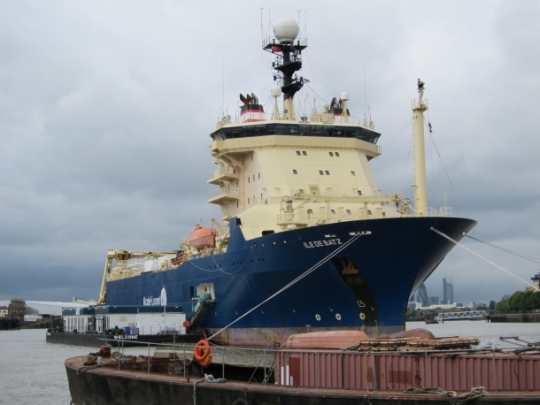
The ship Ile de Batz is usually based in France, but he went to the port of Greenwich to get some components from the local Alcatel-Lucent factory.
Each Ile de Batz flight lasts an average of 30 to 40 days. Under normal weather conditions, it can lay up to 200 km of cable per day at a depth of up to 8 km. Cable life is estimated at 25 years.
Currently, the underwater gasket market is quite stable, there are no new companies, there is no particular competition. The main global project where most of the work is currently underway is Africa. According to experts, large orders from Asia can go in a couple of years.
The cost of a large project can reach $ 500 million, which is why telecoms usually finance the laying of underwater channels for chipping.
A stand with cables of different thicknesses is installed on board the ship. Thicker ones are laid closer to the surface (here they need good protection from the anchors of passing ships, trawls, friction against stones during high tides and other injuries), and thin ones - at the greatest depth, in safety.

In case of damage, the cable can be repaired, for this Alcatel-Lucent has additional ships at sea, but each patch leads to degradation of the channel, that is, it worsens its performance.
This is what the cable docking mechanism looks like. The process requires high precision, do not look at the roll of electrical tape.
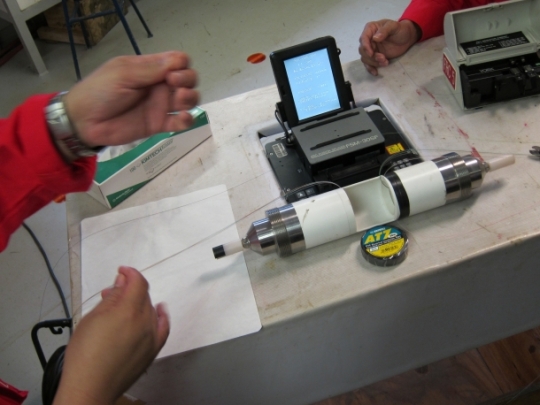
The next machine is needed for pressing the protective layers of the cable. In a sense, the ship is a small factory, because cables often require additional processing.

The ship has two large cable storage. Now they are empty, with the exception of a small bundle of 17 mm optical fiber.
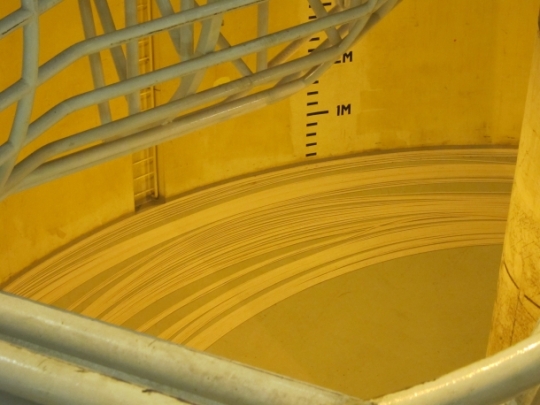
In general, up to 5500 km or 3000 tons of cable is placed in each storage facility. There are also a couple of spare storage facilities for 250 tons.
In the photo - a series of engines for feeding the cable from the storage to the stern, from where it is lowered to a depth.
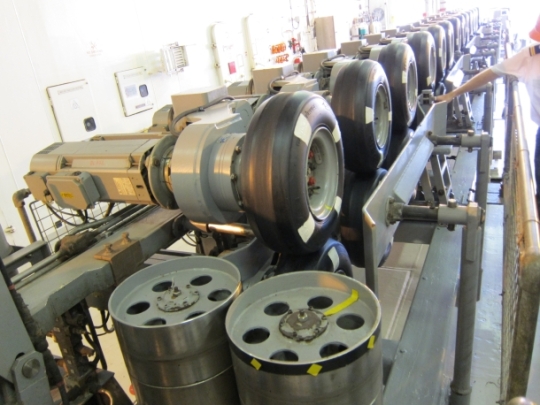
The next surrealistic mechanism is nothing more than an underwater plow that digs optical fiber up to three meters into the bottom. The plow operates at a depth of up to 1.5 km, it is believed that only in such waters go fishing vessels and cables should be hidden from their anchors and trawls.
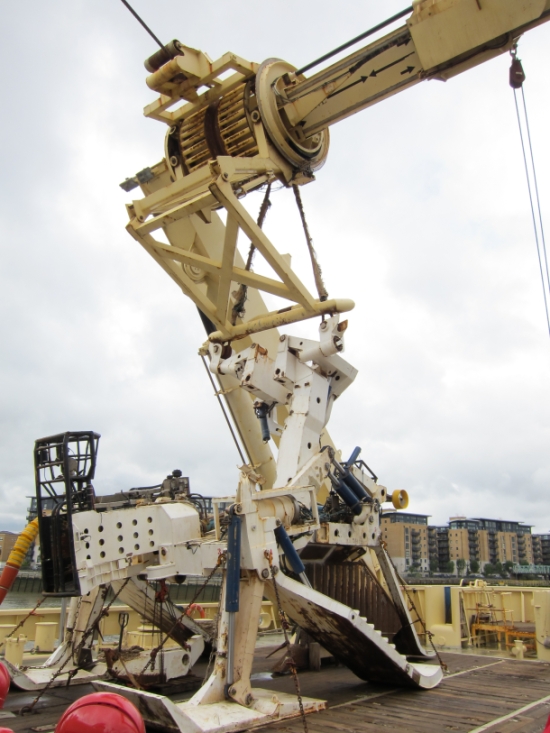
A separate control center, which is separated from the main navigation system of the ship, helps in laying the fiber. Here, all work is controlled, and sensors monitor weather conditions and bottom topography.

The Alcatel-Lucent factory in Greenwich was built in the mid-19th century; now they make amplifiers (repeaters), splitters and equipment for powering the amplifiers.
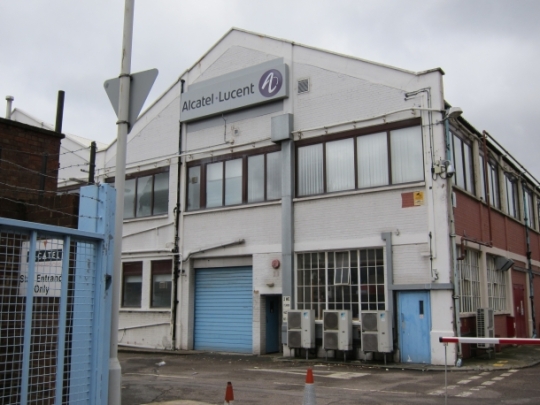
Here's what one of the amplifiers looks like, which put along the entire length of the channel. This two-year-old model provides a data transfer rate of about 1.5 terabits / s.
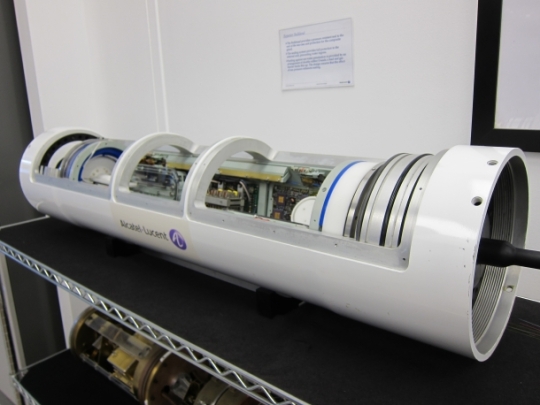
This is a typical splitter that allows you to split the channel into two routes.
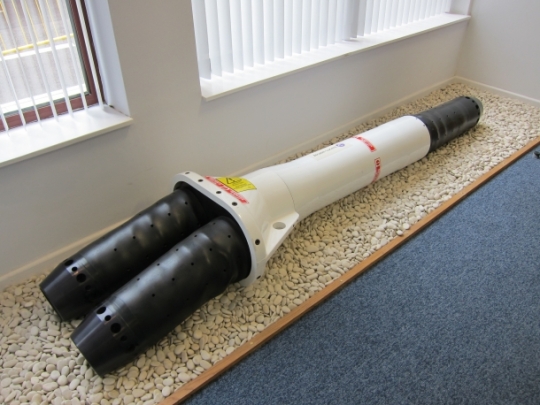
Optional:
Neal Stephenson. Mother earth mother board

The ship Ile de Batz is usually based in France, but he went to the port of Greenwich to get some components from the local Alcatel-Lucent factory.
Each Ile de Batz flight lasts an average of 30 to 40 days. Under normal weather conditions, it can lay up to 200 km of cable per day at a depth of up to 8 km. Cable life is estimated at 25 years.
Currently, the underwater gasket market is quite stable, there are no new companies, there is no particular competition. The main global project where most of the work is currently underway is Africa. According to experts, large orders from Asia can go in a couple of years.
The cost of a large project can reach $ 500 million, which is why telecoms usually finance the laying of underwater channels for chipping.
A stand with cables of different thicknesses is installed on board the ship. Thicker ones are laid closer to the surface (here they need good protection from the anchors of passing ships, trawls, friction against stones during high tides and other injuries), and thin ones - at the greatest depth, in safety.

In case of damage, the cable can be repaired, for this Alcatel-Lucent has additional ships at sea, but each patch leads to degradation of the channel, that is, it worsens its performance.
This is what the cable docking mechanism looks like. The process requires high precision, do not look at the roll of electrical tape.

The next machine is needed for pressing the protective layers of the cable. In a sense, the ship is a small factory, because cables often require additional processing.

The ship has two large cable storage. Now they are empty, with the exception of a small bundle of 17 mm optical fiber.

In general, up to 5500 km or 3000 tons of cable is placed in each storage facility. There are also a couple of spare storage facilities for 250 tons.
In the photo - a series of engines for feeding the cable from the storage to the stern, from where it is lowered to a depth.

The next surrealistic mechanism is nothing more than an underwater plow that digs optical fiber up to three meters into the bottom. The plow operates at a depth of up to 1.5 km, it is believed that only in such waters go fishing vessels and cables should be hidden from their anchors and trawls.

A separate control center, which is separated from the main navigation system of the ship, helps in laying the fiber. Here, all work is controlled, and sensors monitor weather conditions and bottom topography.

The Alcatel-Lucent factory in Greenwich was built in the mid-19th century; now they make amplifiers (repeaters), splitters and equipment for powering the amplifiers.

Here's what one of the amplifiers looks like, which put along the entire length of the channel. This two-year-old model provides a data transfer rate of about 1.5 terabits / s.

This is a typical splitter that allows you to split the channel into two routes.

Optional:
Neal Stephenson. Mother earth mother board
